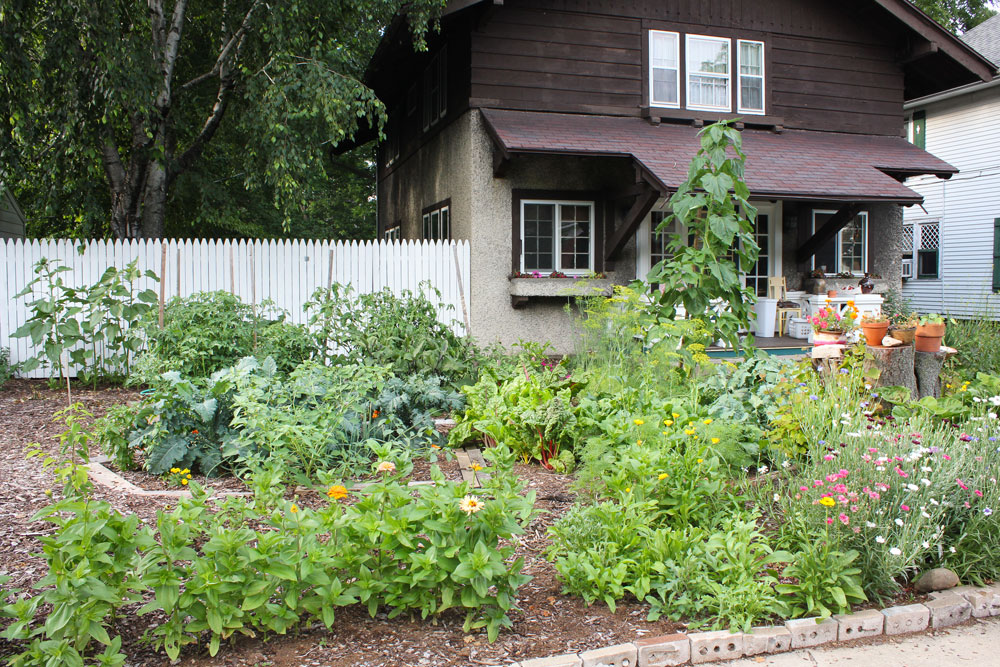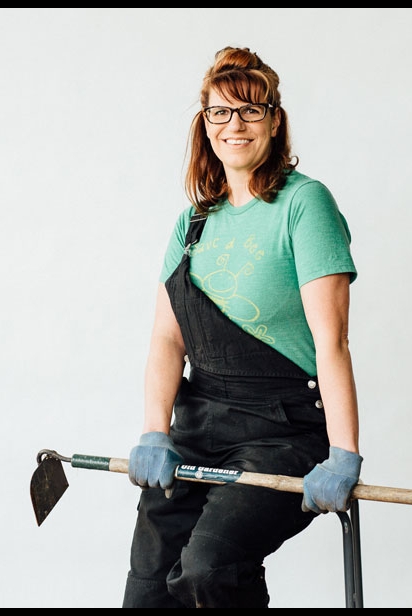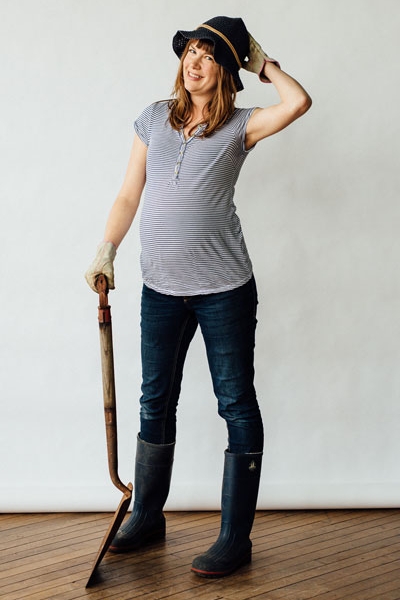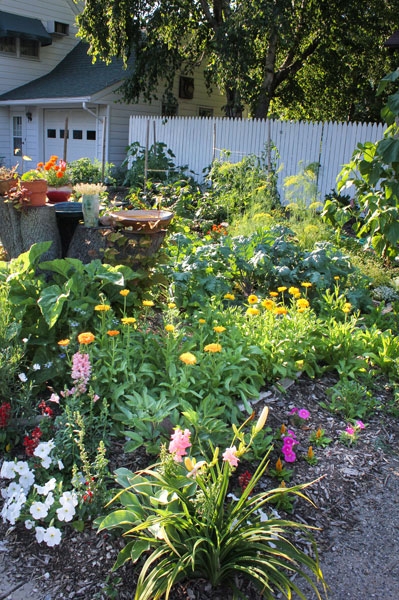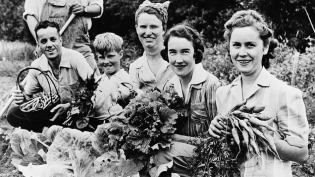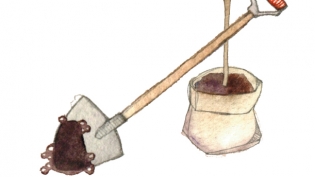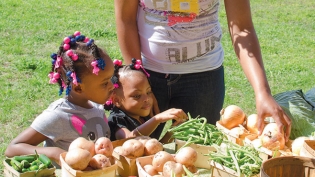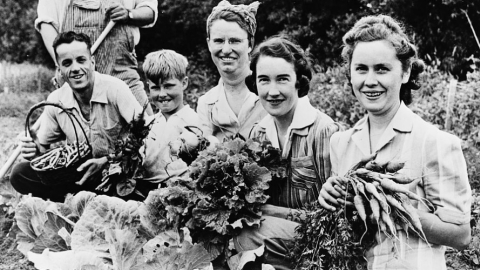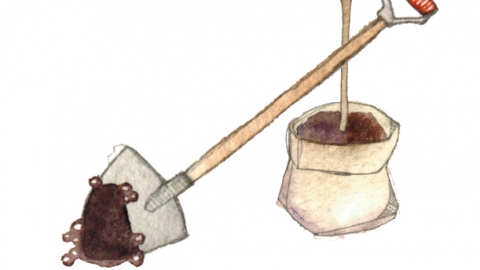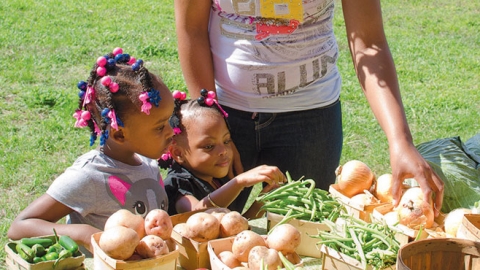From Yard to 'Yarden'
Edible landscapes taking root even on city streets
Midwesterners have long produced bumper crops from kitchen gardens to “put up” for the winter or share with neighbors and friends, but these days growing pumpkins or raising chickens is sometimes seen as a radical idea.
Raising food, especially in front yards, can violate neighborhood or city ordinances—or just ruffle the feathers of neighbors who prefer flat turf and decorative flowers. Local “yardeners” hope to change that by showing that growing food at home allows them to feed their families, be more self-sufficient, use resources more mindfully and create edible landscapes just as beautiful as ornamental yards.
SARA LOWE, SOUTH BEND, INDIANA
After getting her landlord’s permission, Sara Lowe, founder of the Michiana Yardeners, transformed a small, ornamental yard space at her rented home. In the process, Lowe gained a deep respect for what it takes to feed large numbers people year round and the potential for a single monocrop failure to disrupt the food supply.
“Once you start growing sustainably, you think about food differently. I know the energy and work it takes, so not wasting food matters even more to me,” she says.
Rather than trying to grow everything, Lowe plans her garden’s space carefully, supplementing it with purchases from local growers. This year she wants to succession-plant spinach and peas, then tomatoes plus grow a variety of peppers to make hot sauce.
Her advice: Be realistic about the time you will actually spend tending and harvesting to avoid food waste.
MARGARET DEMKO, BUCHANAN, MICHIGAN
Margaret Demko has gardened since childhood. She has fond memories of gardening as “just part of life growing up as a kid,” but it is more than nostalgia. She believes that the produce she grows is much healthier than what she finds in the grocery. “I like to choose what I’m eating and choose how it is cultivated and grown,” she says. “Because we have animals, we use our own manure to fertilize.”
When picking new plants to try in her yarden, Demko finds it important to consider food colors. “For example, the color of the lettuce and kale go along with the other colors in the garden,” she says.
Her advice: Just start. If you really want to garden, you can do it without a yard by growing container lettuces and spinach, even in shade.
LEAH SCHROEDER, GOSHEN, INDIANA
Leah Schroeder and husband Zach Tate reclaimed their Goshen historic district home’s front yard from well-ensconced ivy without chemicals. It took a year but now they grow 60–70% of their summer produce, and their 10-year-old son, Oliver, assists curious neighborhood kids in taste-testing basil varieties.
Schroeder, who previously participated in a community garden, says, “Doing this was logical. It was our first house, we really wanted a garden and the back yard was too shady.”
After checking with the city and talking to neighbors about their plans, they now grow what they like—both to look at and to eat, including rhubarb, beautiful chard and kale, and blackberries and raspberries. Zinnias, Schroeder says, are a practical buffer against dogs.
Her advice: Talk to people already yardening. Get city soil tested for lead or other chemicals if you plan to grow in the ground.
LEARN BY GETTING YOUR HANDS DIRTY
In addition to being decorative, a well-planned yarden supports honeybees and other pollinators, builds community with neighbors, helps children experience and connect with growing food, and provides the satisfaction of fresh food greeting you as you come home.
Of course, losing to a pest or lack of knowledge isn’t fun, but it can happen to anyone. Schroeder planted tomatillos in too small a space and didn’t harvest them in time; Lowe was over ambitious planting mint she now must rip out; and Demko lost her tomato crop last year to blight. The key? Learn and apply your learning generously to next year’s efforts.
Ready to start? Ellen Ecker Ogden, author of The Complete Kitchen Garden, offers three tips:
• Use the 80/20 Rule: Plant 80% with things you know you like and will eat; use 20% to experiment with new flavors.
• Don’t Start Everything From Seed: Planting transplants from a reputable source helps you better plan your spacing.
•Make Growing Fun, Not Work: Start small, learn what succeeds in your space, and what fits your lifestyle.
Happy yardening!


